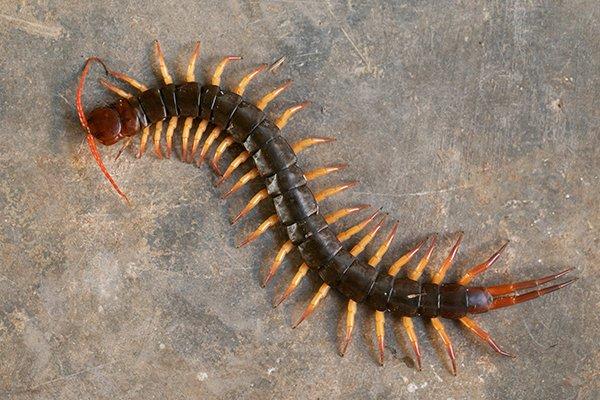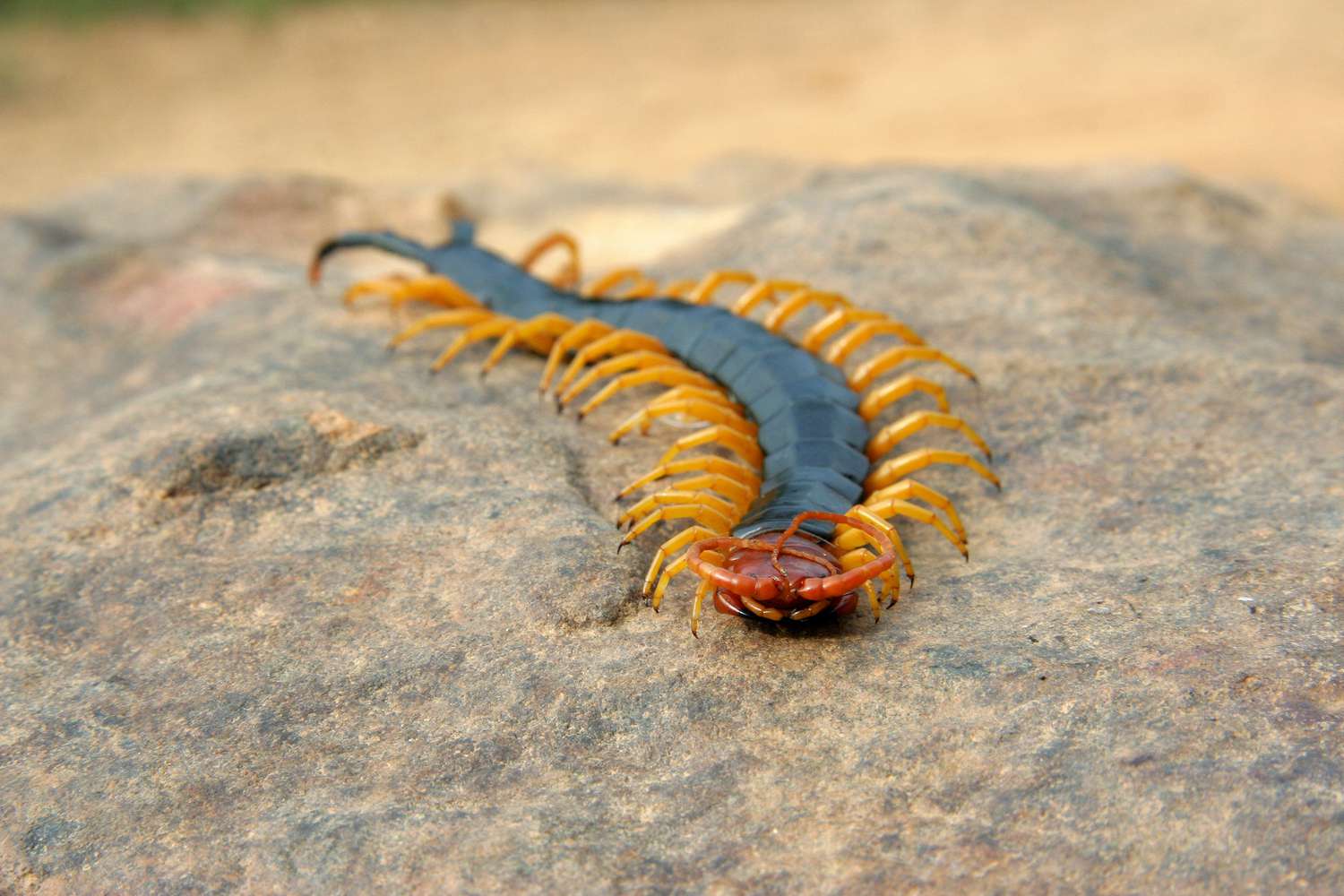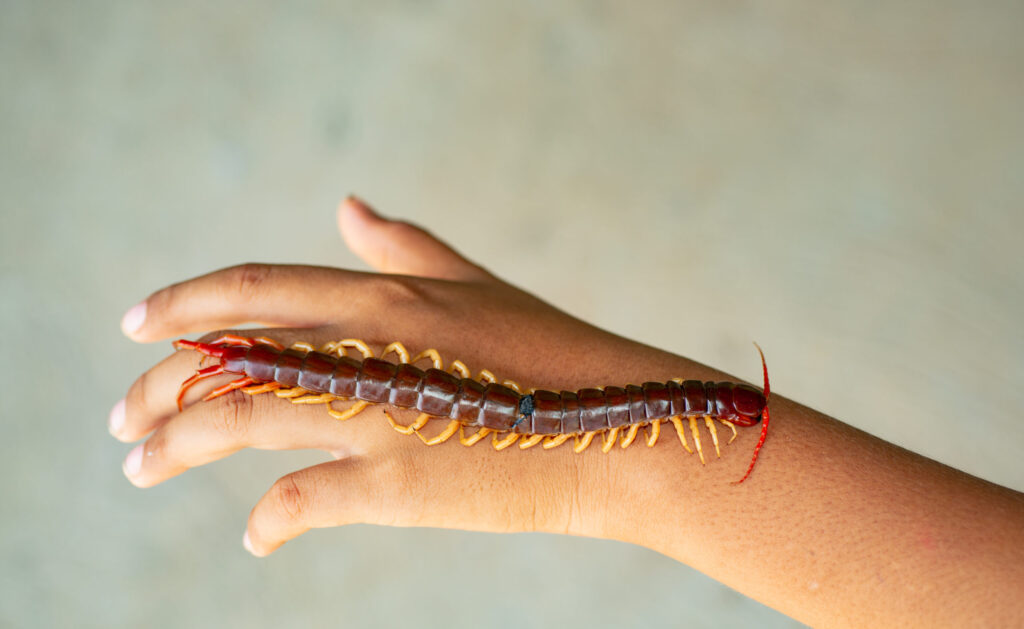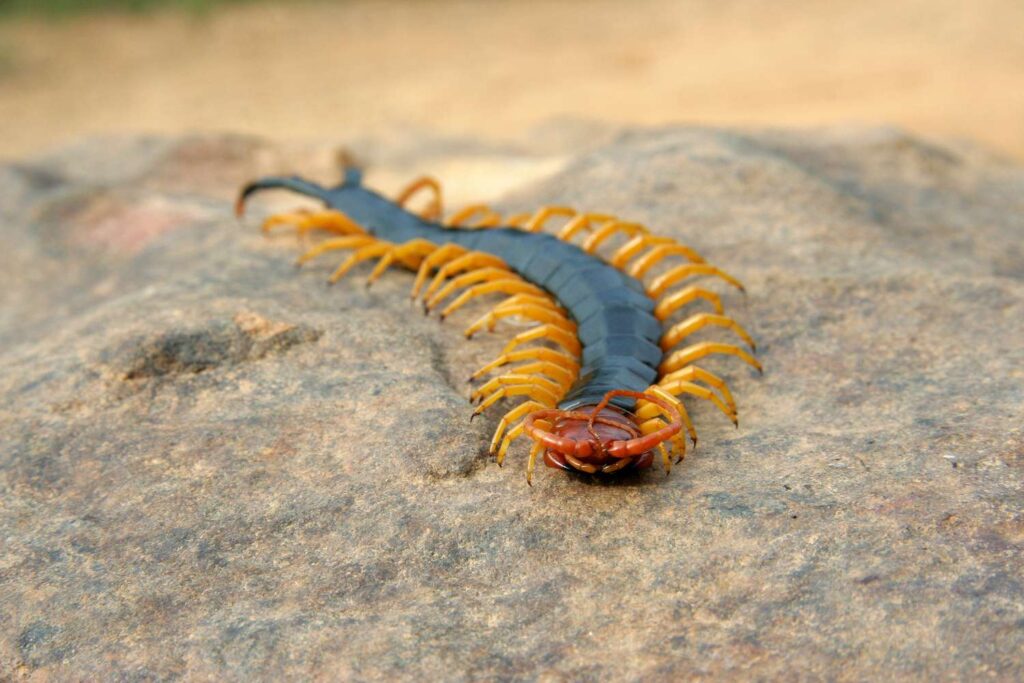- CALL US: 905.318.1242
Centipedes Removal
Centipedes
Centipedes are a Real Nuisance!
Of the class Chilopoda, and the subphylum Myriapoda, Centipedes (scutigera coleoptrata) are anthropoids that can easily be identified by their multitude of legs. Centipedes are mostly considered nuisance pests. Centipedes bite insects to inject venom when they feed. They typically do not bite humans unless they are threatened.
Centipedes live in high-humidity environments, such as bathrooms, basements, and closets. If your home or building has holes in the walls or floor, or around the building, you may have a centipede infestation. Contact the professional centipede exterminator to assess your centipede situation and take appropriate action to stop the infestation.
About Centipedes
House centipedes are one of the most common centipedes in North America. Approximately 70 different species can be found in Canada. The house centipede is the only centipede commonly found in the basements of Ontario homes as well as in business basements.
Centipedes are elongated, with flat, segmented bodies that contain a pair of legs per segment. They can be found in several patterns and colours however the most common are brown and reddish orange. They are also nocturnal and very fast moving. These insects are normally between 1 to 1½ inches long and can have up to 15 pairs of legs. House centipedes eat pests such as cockroaches, silverfish, spiders, and more.

Centipede Infestation
House centipedes that get into a home, will reproduce and lay eggs. Once these eggs hatch, baby centipedes will infest the house. Baby house centipedes are just like the adults. If you feel some tiny pest moving on your body at night that is difficult to catch, it may be a sign you have house centipede infestations.
Once house centipedes find a dark damp place to live, you can see them in areas such as drains, crevices, basement cracks, and bathtubs. After each developmental molt, the centipedes get more legs. House centipede development is not as fast as other insects, taking upwards of 3 years to reach sexual maturity. They also can live as long as 7 years. House centipedes prefer cool, humid, dark environments, and seek out warmth during the cold seasons, and will look to get inside a structure.

Preventing Future Centipede Infestations
Once a centipede infestation has been removed by a professional centipede pest control service, people will take measures to prevent future centipede infestations.
They can repair water leaks, or use dehumidifiers to resolve moisture problems. Getting rid of clutter in basements, crawl spaces, closets and other places where centipedes may hide also helps. They can also seal holes, cracks and crevices that are used by insects to get inside a home. In addition, vacuuming the home or building helps to get rid of indoor centipedes.
- Generally, centipede infestation prevention measures can include:
- Dispose of garbage regularly
- Keep food sources in airtight containers.
- Repair damaged screen openings to chimneys and vents.
- Repair damaged screens
- Seal any spaces where utilities and pipes enter the home or business.
- Keep attics and basements dry and well-ventilated.
- Repair pipes and smelly clogged drains

Professional Centipede Removal Services Provides Peace Of Mind
Just like most pests, house centipedes can be a nuisance since they feed off other pests. Finding them in your home can be a sign you have another underlying issue, and it can result in a large infestation. A centipede infestation is best left to a professional centipede pest control service. If you are experiencing centipedes in or around your home, there is likely a nest nearby. When a centipede infestation is discovered, it is important to contact a centipede exterminator before the situation gets out of control.
Please feel free to contact us by phone or email anytime. We are available seven days per week to provide pests such as the centipede, and wildlife control services in Hamilton, Oakville, Burlington, and surrounding areas, or to answer any of your questions.







